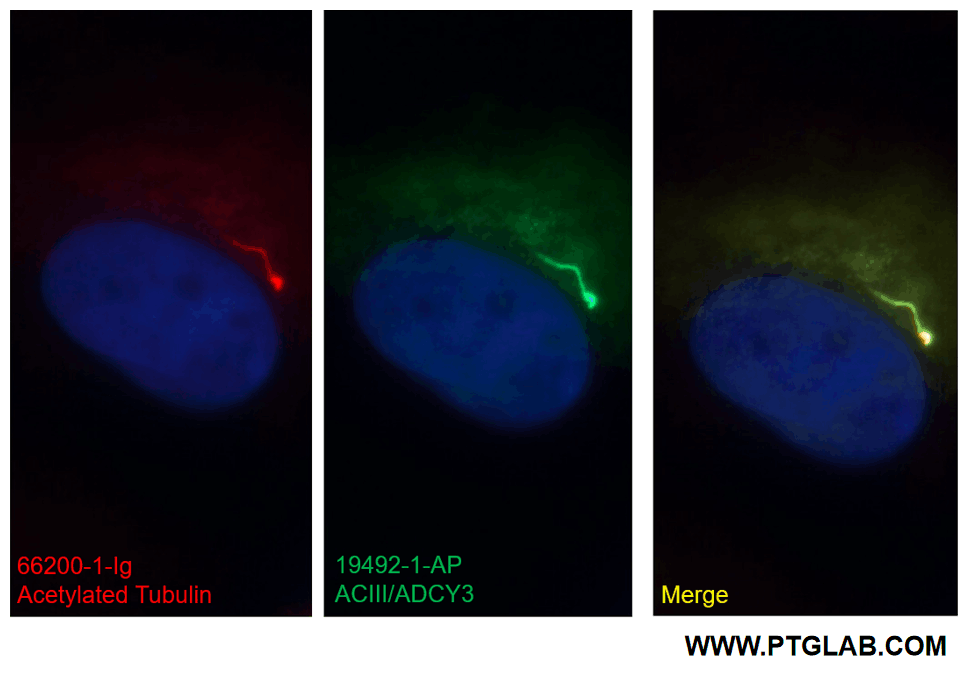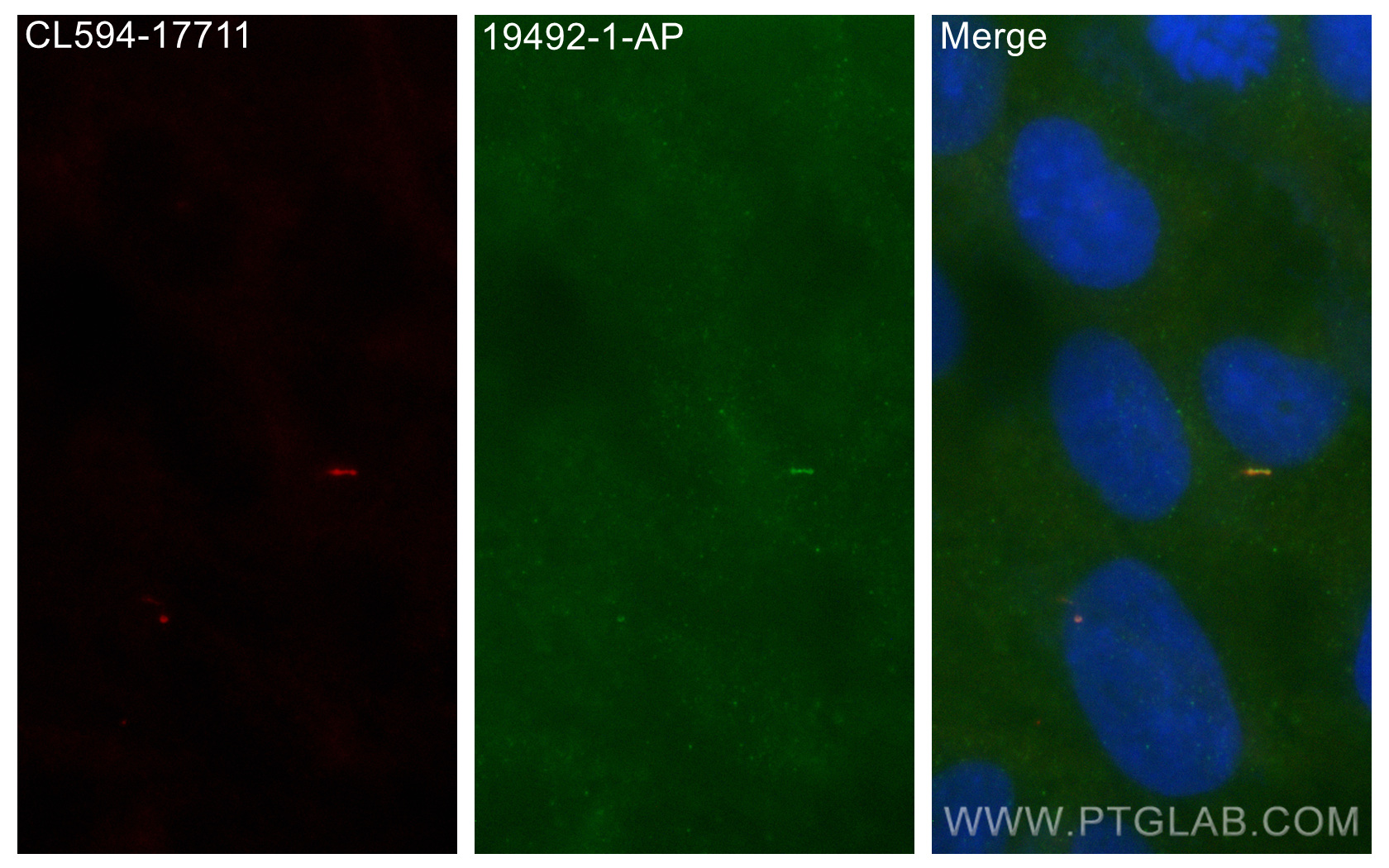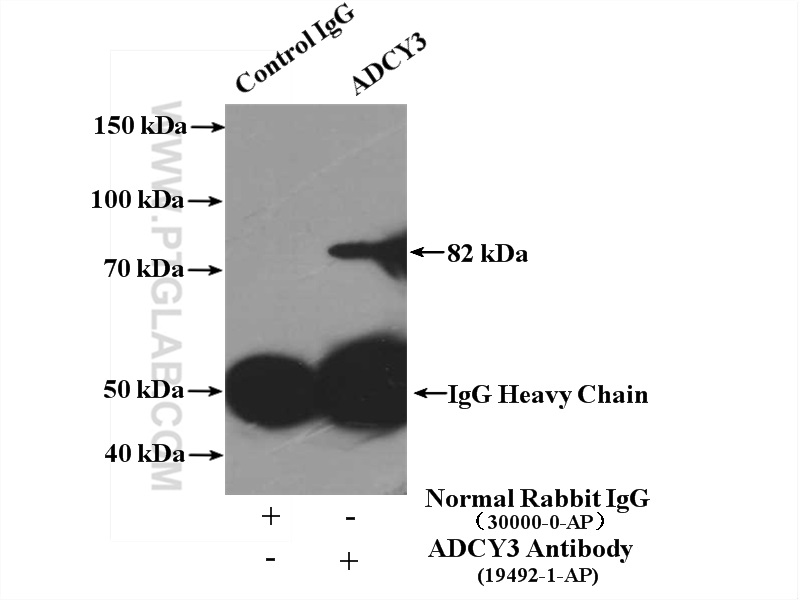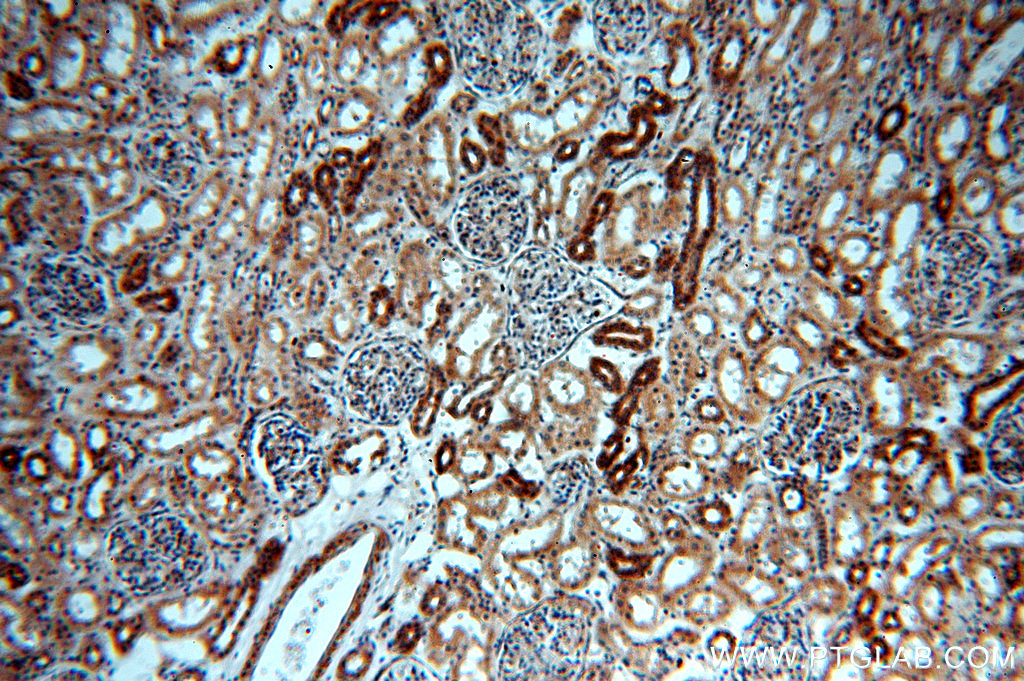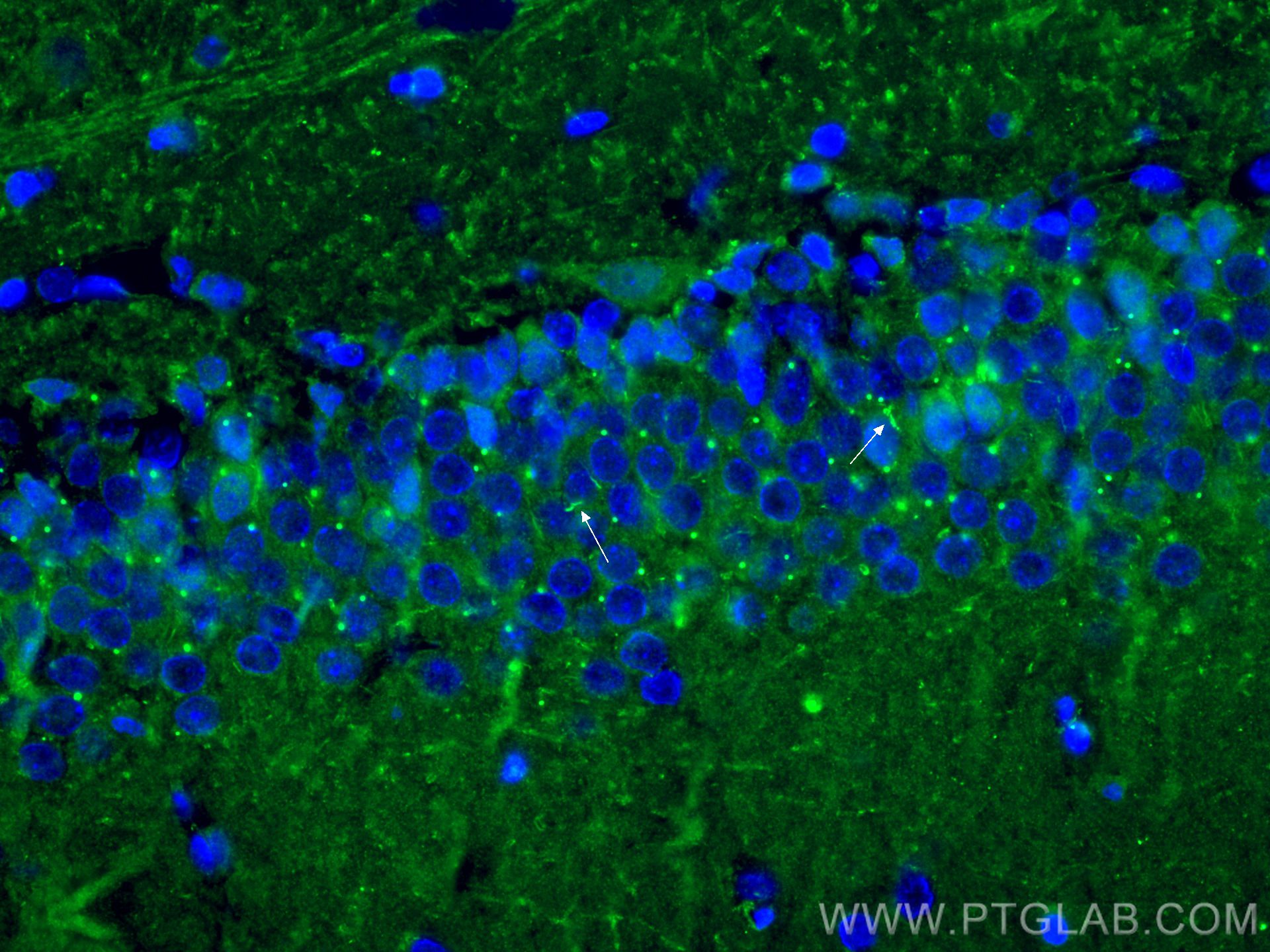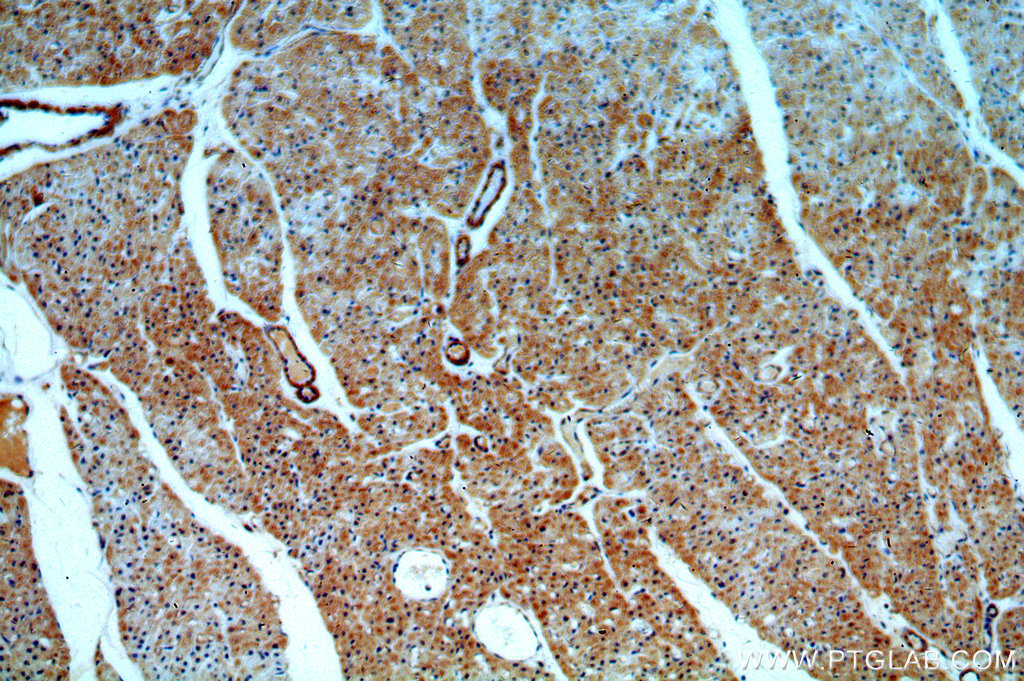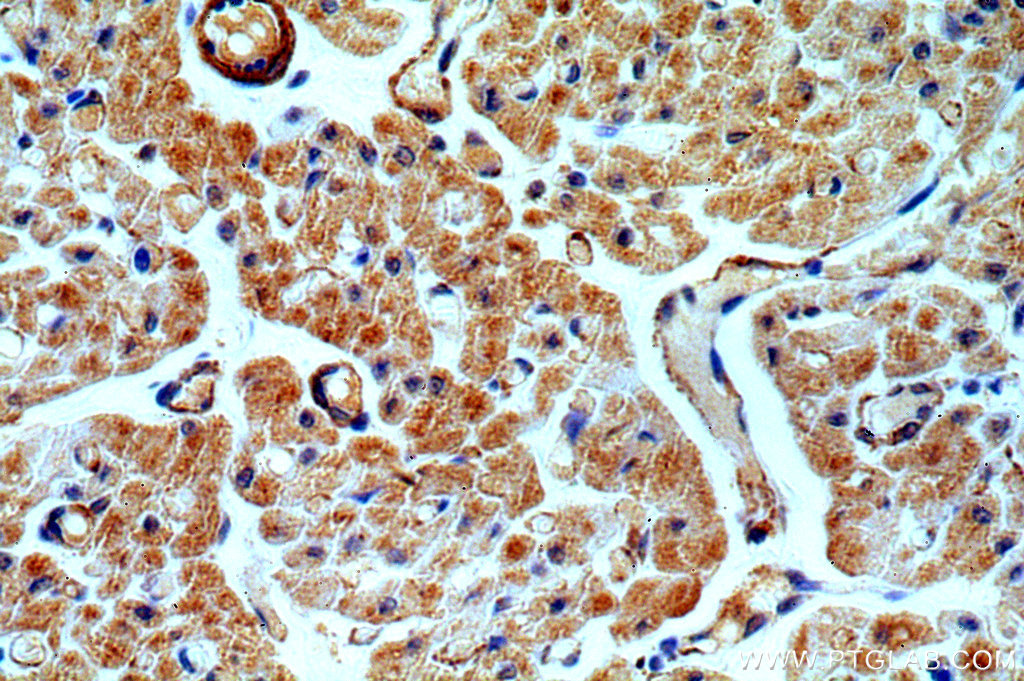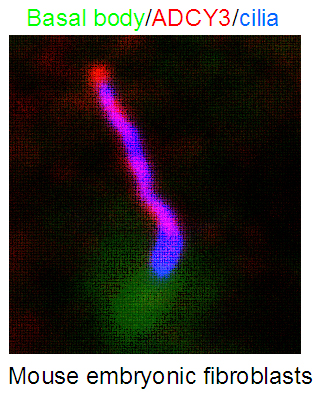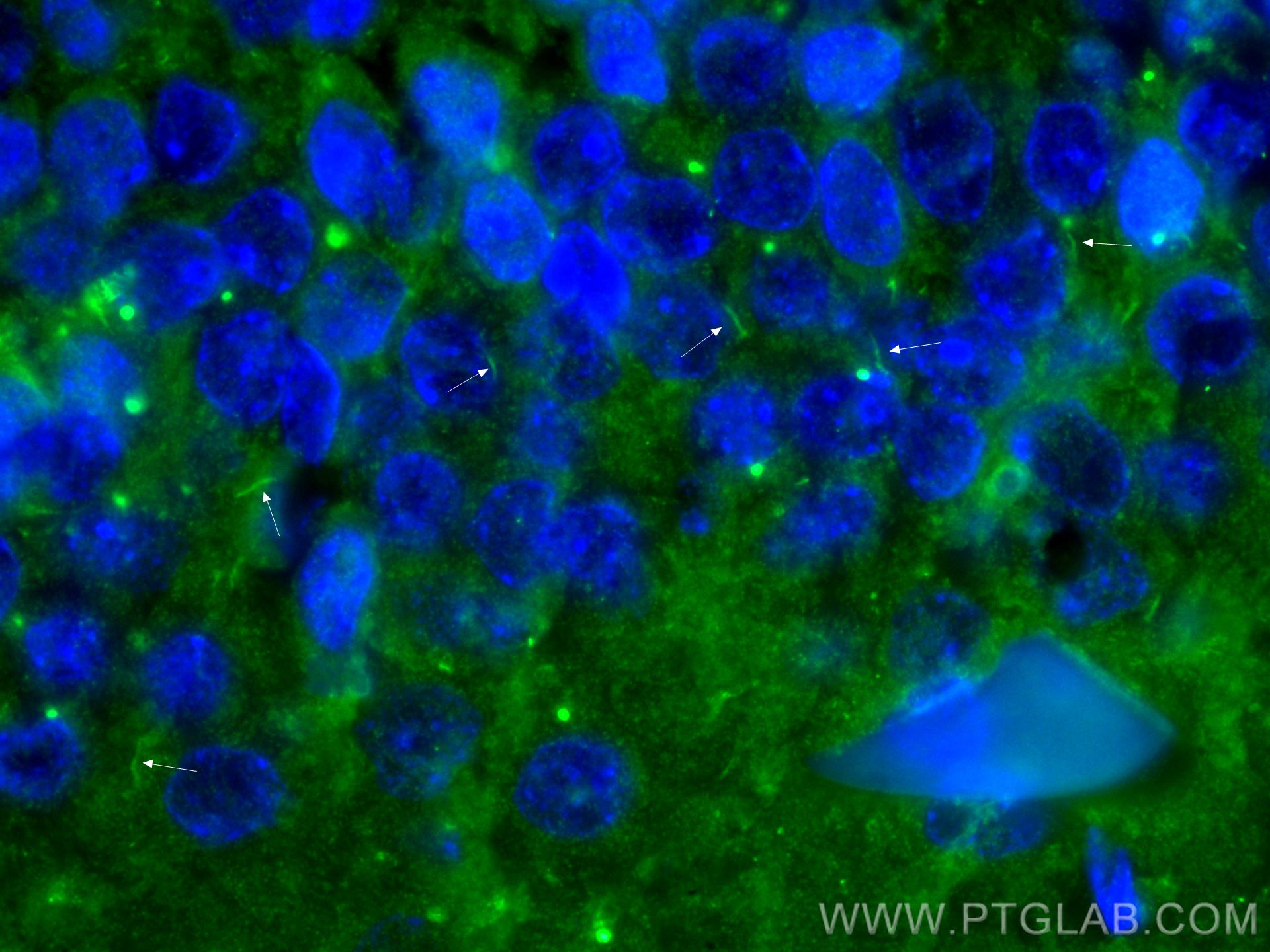验证数据展示
经过测试的应用
| Positive WB detected in | mouse kidney tissue |
| Positive IP detected in | MDCK cells |
| Positive IHC detected in | human kidney tissue, human heart tissue Note: suggested antigen retrieval with TE buffer pH 9.0; (*) Alternatively, antigen retrieval may be performed with citrate buffer pH 6.0 |
| Positive IF-P detected in | rat brain tissue |
| Positive IF/ICC detected in | hTERT-RPE1 cells, MDCK cells |
推荐稀释比
| 应用 | 推荐稀释比 |
|---|---|
| Western Blot (WB) | WB : 1:5000-1:50000 |
| Immunoprecipitation (IP) | IP : 0.5-4.0 ug for 1.0-3.0 mg of total protein lysate |
| Immunohistochemistry (IHC) | IHC : 1:20-1:200 |
| Immunofluorescence (IF)-P | IF-P : 1:50-1:500 |
| Immunofluorescence (IF)/ICC | IF/ICC : 1:200-1:800 |
| It is recommended that this reagent should be titrated in each testing system to obtain optimal results. | |
| Sample-dependent, Check data in validation data gallery. | |
产品信息
19492-1-AP targets ADCY3 in WB, IHC, IF/ICC, IF-P, IP, ELISA applications and shows reactivity with human, mouse, rat, canine samples.
| 经测试应用 | WB, IHC, IF/ICC, IF-P, IP, ELISA Application Description |
| 文献引用应用 | WB, IHC, IF |
| 经测试反应性 | human, mouse, rat, canine |
| 文献引用反应性 | human, mouse, rat |
| 免疫原 | Peptide 种属同源性预测 |
| 宿主/亚型 | Rabbit / IgG |
| 抗体类别 | Polyclonal |
| 产品类型 | Antibody |
| 全称 | adenylate cyclase 3 |
| 别名 | AC3, AC III, ATP pyrophosphate-lyase 3, ADCY 3, AC-III |
| 计算分子量 | 129 kDa |
| 观测分子量 | 130 kDa,82 kDa |
| GenBank蛋白编号 | NM_004036 |
| 基因名称 | ADCY3 |
| Gene ID (NCBI) | 109 |
| RRID | AB_10638445 |
| 偶联类型 | Unconjugated |
| 形式 | Liquid |
| 纯化方式 | Antigen affinity purification |
| UNIPROT ID | O60266 |
| 储存缓冲液 | PBS with 0.02% sodium azide and 50% glycerol , pH 7.3 |
| 储存条件 | Store at -20°C. Stable for one year after shipment. Aliquoting is unnecessary for -20oC storage. |
背景介绍
ADCY3 is an adenylate cyclase (AC) functioning to convert ATP to cAMP in response to signals initiated by activation of Gs-coupled receptors. To date, 10 isoforms of AC have been cloned in mammals. Initially identified in olfactory cilia, ADCY3 is regarded as the olfactory isoform and required for detection of odorants. Recently it has been found that outside of the olfactory epithelium the olfactory-like signaling pathway including AC3 may also have a key role in spermatogenesis and spermatozoa functions. In addition, the ciliary location of AC3 makes it as a prominent marker for primary cilia in brain.AC3 is typically found at 130 kDa in olfactory tissues.In nonolfactory tissues (such as sperm), this protein is reported to migrate with a molecular mass of 55 kDa,occasionally accompanied by additional bands at either 90 or 130 kDa(PMID:9539154).
实验方案
| Product Specific Protocols | |
|---|---|
| WB protocol for ADCY3 antibody 19492-1-AP | Download protocol |
| IHC protocol for ADCY3 antibody 19492-1-AP | Download protocol |
| IF protocol for ADCY3 antibody 19492-1-AP | Download protocol |
| IP protocol for ADCY3 antibody 19492-1-AP | Download protocol |
| Standard Protocols | |
|---|---|
| Click here to view our Standard Protocols |
发表文章
| Species | Application | Title |
|---|---|---|
J Cell Biol Sonic Hedgehog activates prostaglandin signaling to stabilize primary cilium length | ||
Acta Physiol (Oxf) Aromatherapy: Activating Olfactory Calcium-sensing Receptors Impairs Renal Hemodynamics via Sympathetic Nerve-mediated Vasoconstriction. | ||
Hum Mol Genet Shortened primary cilium length and dysregulated Sonic hedgehog signaling in Niemann-Pick C1 disease. | ||
Biomolecules Preferential Expression of Ca2+-Stimulable Adenylyl Cyclase III in the Supraventricular Area, including Arrhythmogenic Pulmonary Vein of the Rat Heart. | ||
Front Physiol Expression Regulation of Water Reabsorption Genes and Transcription Factors in the Kidneys of Lepus yarkandensis. | ||
Dev Dyn Phosphosite T674A mutation in kinesin family member 3A fails to reproduce tissue and ciliary defects characteristic of CILK1 loss of function. |
